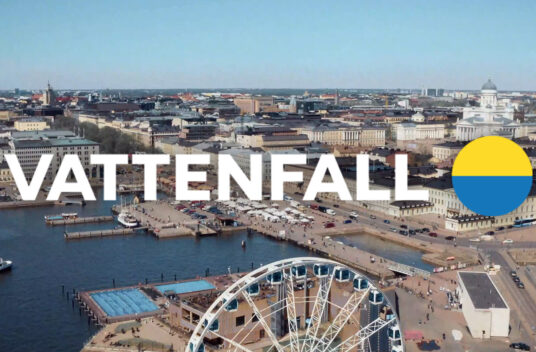Four highlights from the digital media transformation journey 2013-2023
Dagmar has studied the development of digital media in Finland for ten years. The market has been revolutionised and digitalization has changed people’s media use drastically – and marketing as well. Dagmar’s Head of Digital Ilari Ahtola selected four of the most interesting observations from our recent Digital Media Research 10-year trend report.

Over the past 10 years, the digital media market has been revolutionized and media use has changed dramatically – and so has marketing. Read how.
1. Moving images are consumed more than ever
Even after ten years, TV is still the baseline for moving images, even though reach and viewing minutes have been steadily declining. Finns consume moving images more than ever, but viewing is spread across more and more platforms. Social media is distributing doses of dopamine in the form of short video content, and blockbusters are splitting into more and more subscription-based video services.
The change in viewing has been reflected in advertising as shorter content and changes in storytelling. The narrative has been stitched into several fast-consuming content. After free-to-air TV channels, YouTube has become the most popular channel for watching moving images – it has already become the primary channel among young people, with Netflix challenging its dominance.
Just ten years ago, video services were consumed on mobile or laptop screens, now they are viewed through smart TV applications. The TV screen captures about 40% of YouTube views, and video advertising has become an integral part of advertisers’ moving image strategy.
2. Social media divides Finns and offers more and more fun
In 2013, Facebook reached all age groups and the use of social media was polarized. Since then, a huge number of new social media channels have emerged, and the use of social media by different generations has been fragmented across platforms.
Ten years ago, Instagram was still a brand new service. Now it already belongs to the list of the most popular channels. Skype has disappeared, and Twitter did not grow into mainstream media in Finland, but Snapchat and TikTok quickly captured the hearts of Gen Z.
In ten years, social media has changed from a personal communication channel to an increasingly entertaining one. There has been a shift from the reign of images to heavy consumption of short-term video content, and music has taken on a major role in content. Social media has become a source of hits and a significant channel for music consumption.
3. E-commerce became the preferred purchasing channel
n ten years, the web has become the preferred shopping channel for Finns, and the mobile wallet enables quick impulse purchases. As competition for mobile wallets has grown, more has been invested in the quality of customer experiences and consumer confidence in e-commerce has strengthened. It is not uncommon for the process of buying a car or apartment, for example, to be handled online from start to finish.
Online shopping has become commonplace and a natural part of daily purchases. Nearly a third of Finnish consumers order groceries or restaurant food delivered to their homes online. The coronavirus years gave this development more impetus. Social selling is here to stay. Social media serves as an important information retrieval channel for consumers at the procurement stage; Commercial cooperation is considered natural and influencers’ recommendations support one’s own purchasing decision.
4. The time for sunset in the domestic news media did not come
Ten years ago, the decline in the number of readers of printed newspapers led many to predict that social media would eat away at Finnish news media. The bravest predicted that journalism would become completely citizen-oriented and that the giants of the platform economy would take over news distribution.
But things turned out differently. Finnish media houses managed to reinvent themselves, move content distribution to a mobile native environment, build an electronic subscription backlog and commercialise their user data.
Although competition for the time Finns spend on the media has required shifting the content twist to entertainment, the continued strong level of readership shows that there is still demand for Finnish quality journalism.
What is it about?
For 10 years, Dagmar has conducted monthly Digital Media research in Finland. It enables our customers to utilise almost real-time information on the rapidly changing use of digital channels by consumers and the tools used to monitor them.
WRITTEN BY

Head of Digital
LinkedIn
Ilari is Dagmar’s Head of Digital, a long-time professional whose passion is to maximize the value of customer encounters in both paid and owned media. Ilari swears by the union of customer understanding, data, and creativity as the building blocks of an impactful customer experience.
In his free time, he moves with a racket in his hand or skis on his feet.
More on topic
-
 Felix Garlic Ketchup refreshed the whole brand on TikTok – “The best ad I’ve seen”When the iconic Felix ketchup, beloved by families with children, decided to charm Generation Z…See our work
Felix Garlic Ketchup refreshed the whole brand on TikTok – “The best ad I’ve seen”When the iconic Felix ketchup, beloved by families with children, decided to charm Generation Z…See our work -
 Vattenfall’s B2B website is clearer and more readableThe collaboration between Dagmar and Vattenfall‘s B2B marketing Energyplaza started already in November 2023. We…See our work
Vattenfall’s B2B website is clearer and more readableThe collaboration between Dagmar and Vattenfall‘s B2B marketing Energyplaza started already in November 2023. We…See our work -
 Accessibility and SEO: Success Factors in the Digital WorldAccessibility is an increasingly critical part of a website’s functionality and user experience. Although accessibility…Read the blog
Accessibility and SEO: Success Factors in the Digital WorldAccessibility is an increasingly critical part of a website’s functionality and user experience. Although accessibility…Read the blog